Key Takeaway
Discover the ideal yoga meditation poses and postures to enhance your meditation session, allowing energy to flow freely and your mind to delve into a state of deep insight.
Did you know that the way you hold your body is the way that energy can flow through you, either improving or reducing the quality of your meditation practice. When the body is still, the mind can be strong, and the meditation can be deep. But without a strong foundation, your meditation practices will struggle to grow.
Here, we will look at both sitting postures and even standing meditation postures to find the right yoga meditation positions to deepen your practice. Allowing your entire body to be in a comfortable position will ensure that you can get the most insights out of your meditations.
Contents
- 1 Sukhasana (Easy pose)
- 2 Lotus Pose (Padmasana)
- 3 Kneeling Pose (Virasana)
- 4 Standing Meditation Practice
- 5 Meditation poses to increase upper body and mental strength
- 6 Meditation postures for lower body pain
- 7 Left foot or right foot forward? The difference between masculine and feminine energies
- 8 Adding mudras to your meditation practice
- 9 Frequently asked questions:
Sukhasana (Easy pose)
The most common of all meditation positions is Sukhasana, an easy pose. It is called this easy pose because it is a simple, cross-legged position. To do this pose, come to a comfortable seated position with your spine straight and the crown of your head growing up toward the sky. Really ground down through your hips. If you feel tension or tightness in the hip crease (also known as the hip flexors), you can help release tension by propping your hips up and sitting on a folded blanket or meditation cushion. Meditation props are designed to help make your practice more comfortable and enjoyable and to allow you to drop into your meditative state quicker.
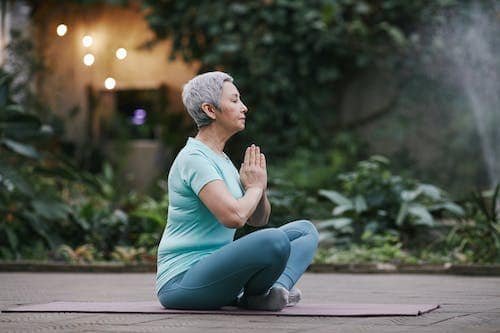
Lotus Pose (Padmasana)
After you have mastered the comfort of easy pose, you might like to challenge yourself by trying to meditate in Lotus pose. This advanced meditation pose involves resting the right foot on the left thigh and the left foot on the right thigh. To sit comfortably in this seated meditation position, you will need to have a good amount of flexibility in your hips.

To build up to making this posture comfortable, start with small and short meditations in lotus pose before trying to stay in this position for a long period of time. This will help the legs adjust to the intensity.
Other options to try on your way to full lotus pose are quarter lotus or half lotus (ardha padmasana). Quarter lotus is the same body position as Sukhasana (easy pose) with both ankles on the floor, and half lotus is similar, but one foot touches the upper thigh and the other foot is underneath. If you choose half lotus, it is important to swap legs each session to ensure a balancing effect on both hips.
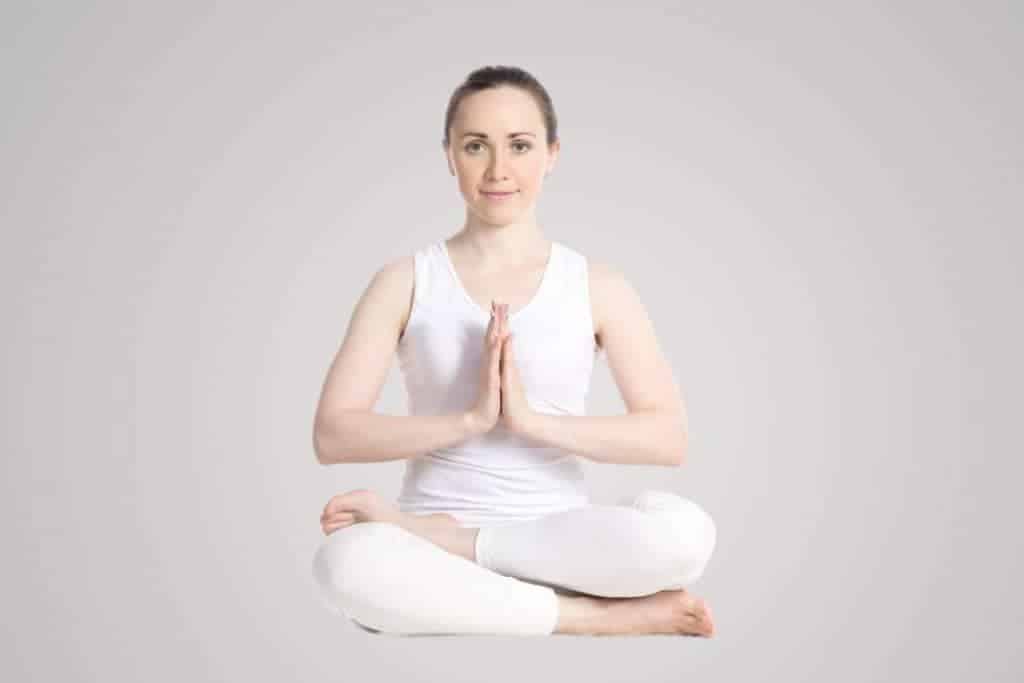
Kneeling Pose (Virasana)
When supported with yoga props, especially virasana, becomes a pleasant option for those who want to meditate. Maintaining an upright posture reduces the likelihood of back pain and improves breathing compared to the rounded lumbar spine that is often seen when sitting cross-legged.
This pose is a great option as an alternative to the harder Lotus Pose, which requires a lot of hip flexibility. Additionally, doing Virasana has a number of other advantages.
The thighs, knees, and ankles are strengthened and stretched by this pose. You can ensure a good experience with meditation or breathing exercises by making the position more accessible and comfortable by sitting on a cushion or prop.
Hero Pose is also known to enhance posture and open the chest, which promotes mindfulness and relaxation.

Standing Meditation Practice
If you want to try meditating a little differently, or perhaps if you experience physical pain when sitting, a wonderful practice to try is standing meditation. To do this, you will come to the yoga posture known as Tadasana (Mountain Pose). Have your feet hip-width apart and the legs straight, with only a slight bend in the knees. Grow your body tall, feeling the body upright and strong. Release your arms down by your sides, let your palms face forward, and pull your shoulder blades together to open the heart center.
This posture is great for a body scan, as you can notice the difference between the left foot, left knee, and entire left leg compared to the right foot, right knee, and entire right leg. Become aware of the difference on both sides of your body and take at least five deep breaths to calm and clear the body and mind.
Imagine that you are a powerful mountain that has overcome years of weathering to grow strong, resilient, and abundant in your sense of well-being!
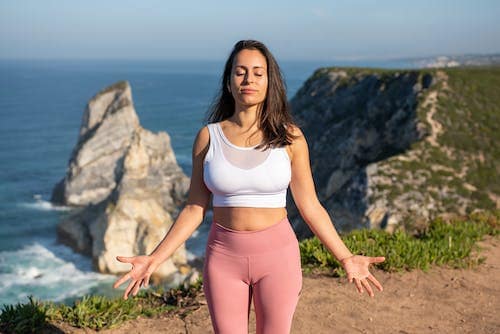
Meditation poses to increase upper body and mental strength
If you’ve mastered the art of the comfortable sitting posture for meditation and you are ready for a challenge then here it is. In Kundalini Yoga, many meditations involve taking the arms overhead and holding them there, with the arms straight for an extended period. These kinds of challenges may at first cause mental stress and even physical pain, but as you learn to keep the body upright, and to focus on one deep breath at a time, you may even start to find this is a comfortable posture for deep and insightful meditation.
These kinds of challenges help to bend the mind, shift perspective, and grow not only the strength in your body but also the strength in your mind.
Surrender to the pain in your legs, rest in the discomfort, and lean forward into the challenge. This is how growth will occur.

Meditation postures for lower body pain
If you experience any lower body pain such as trouble bending the knees, or tight muscles in the left leg or right leg, or even find it difficult to keep your legs straight for long periods of time, then some of the suggested postures above may not feel good for your body. Instead, lean on yoga props for support or choose to support your lower back with a chair and meditate in a seated position.
Find a comfortable chair where you can bend your knees with ease, feel supported on your sit bones, and also a place where your spine is straight and your body can rest easily for a long period.
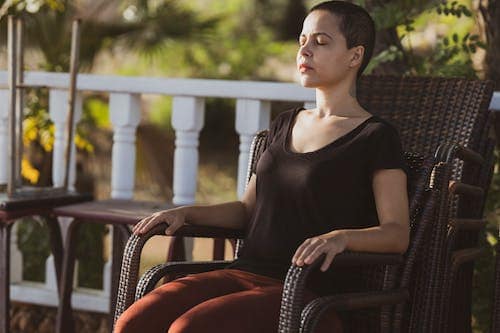
If you want to add a gentle stretch here to help you get to the floor for meditation in the future, you may start with a variation of half lotus, while you stay in your seat. For this, bend the left knee and bring your left foot up to the right thigh or somewhere along the upper right leg. Let the left knee fall out wide and feel this stretch in your hips. Stay for a few breaths and then return to neutral, before swapping to the other side and bringing your right foot to your left thigh or somewhere along the upper left leg. Only do this if it is comfortable for your knees. In this stretch, you may realize that one leg is tighter than the other, and you have some balancing of the body to work on!
Alternatively, if all seated poses bring discomfort, you can always choose to relax in savasana, or corpse pose, to build your mental strength and awareness first.
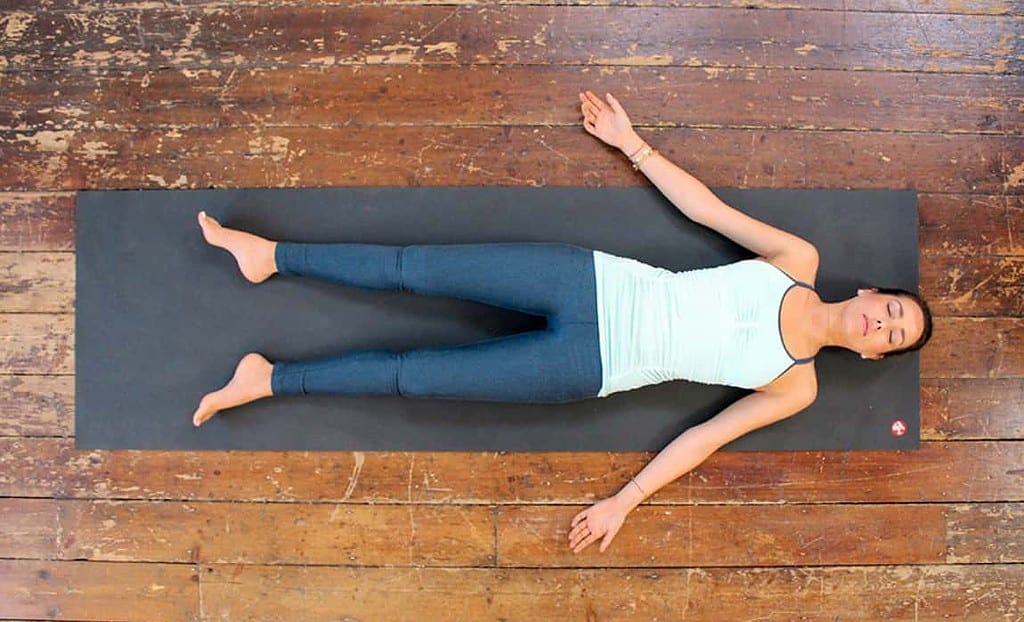
Left foot or right foot forward? The difference between masculine and feminine energies
The left side of the body is commonly associated with the feminine, whereas the right side of the body is part of the masculine. Depending on what kind of energy you want to cultivate in your meditation practice, you may play with using different sides of the body.
For example, if you rest your left foot or leg in front of your right leg in an easy sit (sukhasana), you may focus on how you can put your feminine, creative self first. Or, if you choose to lay your right arm and right hand facing up and your left hand facing down, this may be a sign of being receptive to more masculine energy and the ability to take more action in your life.
To work out how these energies play a role in your body, simply sit in meditation and explore different postures and their effects on your mind and body. The more you sit and take deep breaths, the closer you will be to knowing yourself.
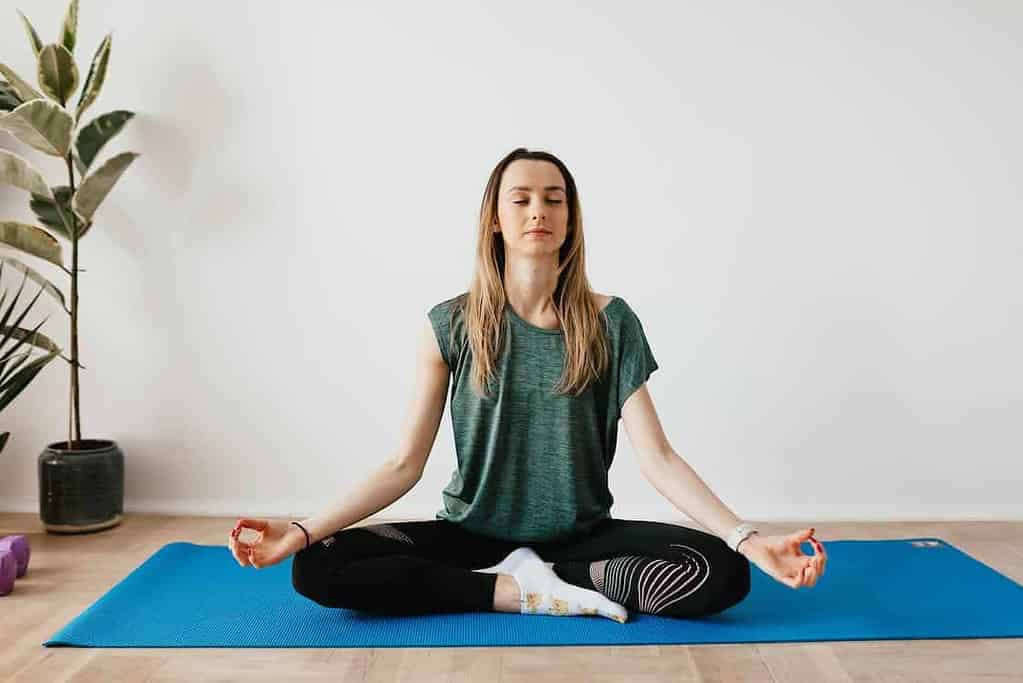
Adding mudras to your meditation practice
As well as sitting in a comfortable place for a meditation practice, you may also play with adding mudras (hand gestures) to your practice. When you sit with a mudra, you may deepen an aspect of your practice.
Find the many different mudras and their benefits in this article!
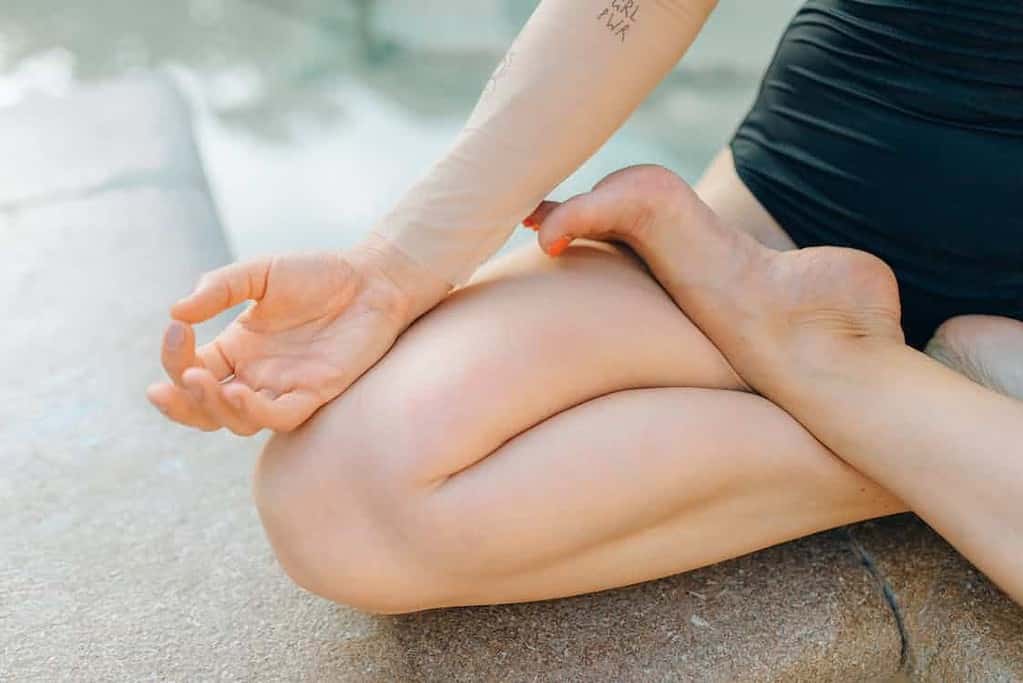
Frequently asked questions:
What are the best yoga poses for meditation practice?
The best yoga pose for meditation is the one that you can comfortably sit in and drop deeply into your meditation practice. This will look and feel different for everyone.
What is the most common meditation pose in yoga called?
The most common meditation pose is known as Sukhasana (easy pose or easy sit) or Padmasana (Lotus Pose) for more advanced yogis and meditators.
What is the difference between meditation and yoga?
We have all the information about the difference between meditation and yoga in this article here.


